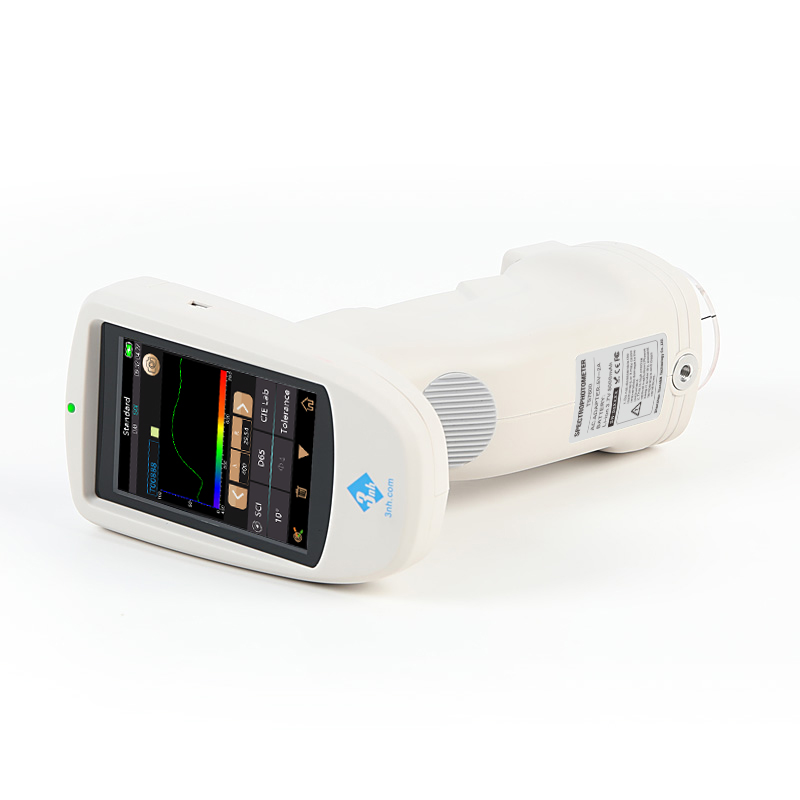In the world of color measurement and quality control, colorimeters and spectrophotometers are two essential instruments used across industries such as food & beverage, printing, textiles, and paints. While both serve the common purpose of evaluating color, they differ significantly in functionality, accuracy, and application.
This guide will help you understand the key differences between colorimeters and spectrophotometers so you can choose the right tool for your color analysis needs.
1. Introduction
Accurate color measurement is critical for product consistency and customer satisfaction. Both colorimeters and spectrophotometers are designed to quantify and communicate color, but they do so with different levels of precision and data complexity.
2. What Is a Colorimeter?
A colorimeter is a device that measures the absorbance of specific wavelengths of light by a solution. In color science, it's used to measure the color difference between a sample and a standard using the CIE L*a*b* color space.

Working Principle
-
Uses RGB filters to simulate human vision
-
Measures how close a sample's color is to a reference
-
Commonly used to calculate ΔE (Delta E), the color difference value
Applications
-
Food & beverage (e.g., juice, sauces)
-
Textiles & printing
-
Routine QC checks
3. What Is a Spectrophotometer?
A spectrophotometer is a more advanced device that measures the amount of light absorbed or reflected at each individual wavelength across the visible (or UV/IR) spectrum.

Working Principle
-
Analyzes full spectral data (400–700nm) or more
-
Provides detailed spectral curves
-
Measures reflectance and transmittance
Applications
-
Pharmaceuticals
-
Paints & coatings
-
High-precision color development
-
Scientific research
4. Comparison Table: Colorimeter vs Spectrophotometer
|
Feature |
Colorimeter |
Spectrophotometer |
|
Measurement Type |
Color difference (ΔE) |
Full spectral reflectance/transmittance |
|
Precision |
Moderate |
High |
|
Wavelength Range |
3 RGB filters |
400–700+ nm |
|
Use Case |
Quick quality checks |
Color formulation & R&D |
|
Output |
L*a*b*, ΔE |
L*a*b*, spectral data, graphs |
|
Cost |
Lower |
Higher |
|
Ease of Use |
Very easy |
Requires training |
|
Portability |
Often portable |
Varies (benchtop/portable) |
5. When to Use a Colorimeter
Use a colorimeter if you need:
-
Fast pass/fail checks
-
Basic QC in manufacturing
-
A simple device for consistent, repeatable measurements
-
Not ideal for color formulation or when exact spectral data is required.
6. When to Use a Spectrophotometer
Use a spectrophotometer if you:
-
Need high-precision color analysis
-
Formulate new colors or adjust tints
-
Work in regulatory or research settings
-
It’s indispensable when detailed color curves and wavelength data are required.
7. Types of Spectrophotometers
-
Single-beam: Measures sample and blank sequentially
-
Double-beam: Measures sample and blank simultaneously
-
UV-Vis Spectrophotometer: Measures across ultraviolet and visible spectrum
-
Portable spectros: Compact for field use
8. Key Parameters Measured
|
Parameter |
Colorimeter |
Spectrophotometer |
|
ΔE (Color Difference) |
✔ |
✔ |
|
Lab* |
✔ |
✔ |
|
Spectral Curve |
✘ |
✔ |
|
Transmittance/Reflectance |
✘ (limited) |
✔ |
|
Absorbance |
✘ |
✔ |
9. Price and Complexity
-
Colorimeter: $500–$2,000 USD
-
Spectrophotometer: $2,000–$15,000+ USD
Colorimeters are ideal for startups or budget-sensitive environments. Spectrophotometers justify their cost through flexibility and precision.
10. Color Matching and Quality Control
Spectrophotometers are preferred in industries where tight tolerances and color matching are crucial, while colorimeters are sufficient for basic color comparisons.
11. FAQs
- Q: Can a colorimeter measure opacity?
A: No, that requires a spectrophotometer with transmittance capability.
- Q: Is a spectrophotometer harder to use?
A: Slightly. It provides more data and may require training.
- Q: Which is more portable?
A: Colorimeters are typically more compact and user-friendly.
12. Conclusion
Colorimeter vs Spectrophotometer comes down to application needs:
-
Choose a colorimeter for quick, easy, and cost-effective color difference checks.
-
Choose a spectrophotometer when you need precision, spectral data, or are involved in color formulation and R&D.
-
Bottom Line: For routine QC, go colorimeter. For color science, go spectro.








 0086 18165740359
0086 18165740359 Skype Online
Skype Online